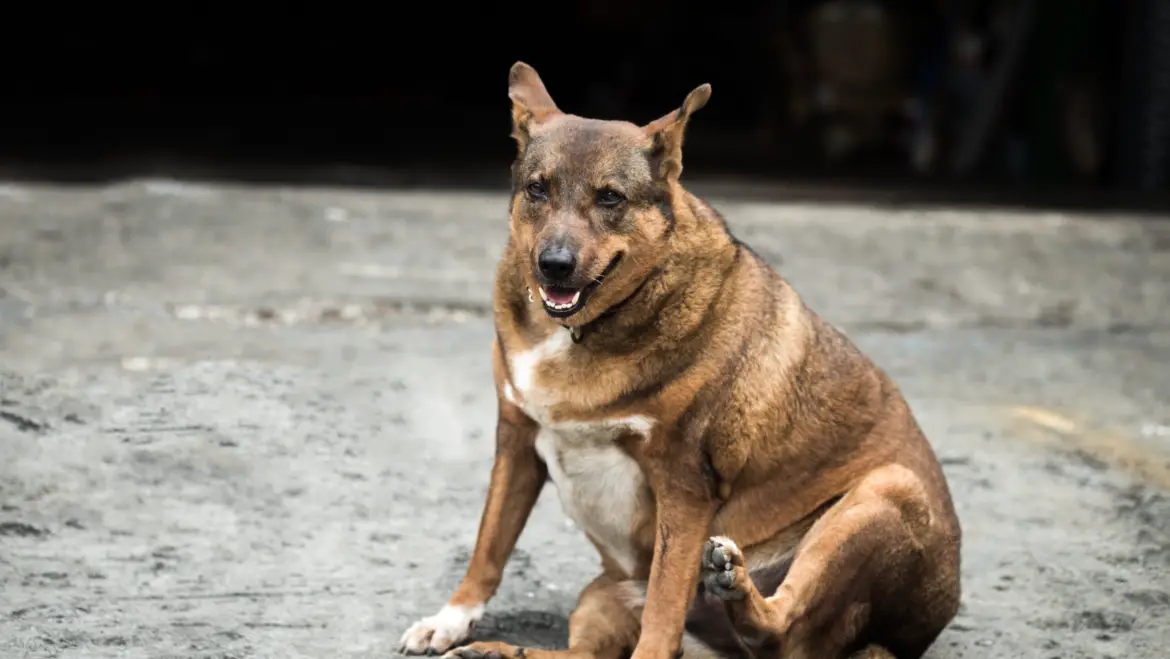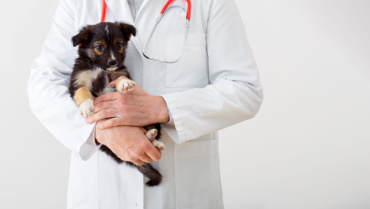Do you often find yourself unable to resist those puppy dog eyes begging for just one more treat? We all love spoiling our furry friends, but sometimes that extra snack or skipped walk can lead to a bigger problem: obesity.
Yes, even dogs can struggle with weight issues! In fact, according to the Association for Pet Obesity Prevention, over 50% of dogs in the United States are overweight or obese. But how do you know if your beloved pup is carrying around too many extra pounds?
Keep reading to learn how to recognize the signs of canine obesity and what steps you can take to help your furry friend get back on track.
What is Dog Obesity?
According to the Association for Pet Obesity Prevention, 58% of dogs in the United States are overweight or obese. That’s up from 54% just seven years ago. While our furry friends may enjoy those extra treats we feed them, being overweight can lead to a number of serious health problems in dogs, including:
* Arthritis and joint pain
* Diabetes * Heart disease
* Kidney disease
* Respiratory difficulties
* Cancer Just like in humans, excess weight in dogs is often caused by a combination of too many calories and not enough exercise. And like us, obese dogs are more likely to be obese as adults if they were overweight as puppies.
If you think your dog may be overweight, talk to your veterinarian about the best way to help him slim down.
Symptoms and Signs of an Overweight Dog
Being overweight or obese is not a death sentence for your dog, but it does increase their risk of developing health problems. Some of the symptoms and signs that your dog may be overweight include: 1. Your dog has a pot belly or sagging skin on their abdomen.
2. You can’t feel their ribs when you pet them.
3. They struggle to walk or move around easily.
4. They pant excessively or have trouble breathing. If you notice any of these symptoms in your dog, it’s important to talk to your veterinarian about a weight loss plan.
Health Risks Associated with Dog Obesity
One of the most common health risks associated with dog obesity is joint problems. Because extra weight puts additional stress on a dog’s joints, obese dogs are more likely to develop arthritis or other joint issues. Other health risks associated with canine obesity include:
* Respiratory problems – Extra weight can make it difficult for a dog to breathe, especially during exercise. * Heart disease – Obesity can lead to high blood pressure and heart disease in dogs.
* Type 2 diabetes – This is a condition that is becoming increasingly common in overweight dogs.
* Skin problems – Dogs that are overweight are more prone to developing skin conditions such as dermatitis or hot spots.
* Liver disease – Fatty liver disease is a common complication of obesity in dogs. These are just some of the health risks associated with canine obesity.
If your dog is overweight, it’s important to talk to your veterinarian about the best way to help them lose weight safely and protect their health.
Causes of Dog Obesity
There are many different causes of dog obesity. One of the most common is simply feeding them too much. Dogs love food and will often beg for more, even when they’re already full. It’s important to be aware of how much your dog is eating and to make sure they’re not overeating.
Another common cause of dog obesity is lack of exercise. Just like humans, dogs need to get plenty of exercise to stay healthy and avoid weight gain. If your dog isn’t getting enough physical activity, they may start to put on weight.
There are also some health conditions that can lead to obesity in dogs. For example, hypothyroidism (a condition where the thyroid gland doesn’t produce enough hormones) can cause weight gain in dogs.
Some breeds are also more prone to obesity than others, such as Labrador Retrievers, Cocker Spaniels, and Basset Hounds. If you think your dog may be overweight, it’s important to talk to your veterinarian about it. They can help you determine if there’s a medical reason for the weight gain or offer advice on how to help your dog lose weight safely.
Solutions for Morbidly Obese Dogs
There are many possible solutions for morbidly obese dogs, but the most important thing is to work with your veterinarian to develop a plan that is right for your dog. Here are some general tips:
-Increase your dog’s activity level gradually. If your dog is not used to exercise, start with short walks and build up to longer ones.
-Feed your dog smaller meals more often throughout the day instead of one large meal.
-Avoid giving your dog high calorie treats or table scraps.
-Make sure your dog is getting enough protein and fiber in their diet. If you are unsure about how to get started, talk to your veterinarian or a canine nutritionist who can help you create a customized plan for your dog.
Diet Change for Overweight Dogs
Assuming your dog is overweight, you’ll want to make some diet changes. The first step is to reduce the amount of food you’re giving them at each meal. You can do this by 10-15% to start. If you’re not sure how much to feed them, talk to your veterinarian.
They can help you determine the right amount based on your dog’s weight, activity level, and health condition. In addition to reducing the amount of food, you’ll also want to look at the quality of the food you’re feeding.
Choose a high-quality, nutritious food that is lower in calories and fat. Avoid foods that are high in fillers and empty calories. Instead, opt for foods that will help your dog lose weight while still providing them with the nutrients they need. Making these changes may take some time and effort, but they will be worth it when you see your dog reach a healthy weight.
Exercise & Activity for Dogs
Dogs are couch potatoes just like us, and sometimes they need a little help getting off the couch and moving around. Just like people, dogs come in all shapes and sizes, so there’s no one-size-fits-all answer to how much exercise your dog needs.
The amount of activity your dog needs depends on their age, breed, size, and weight. You should start by taking your dog for a walk around the block once or twice a day. If you have a yard, letting your dog run around in it is also a good way to get them some exercise.
Dogs love to play fetch, so if you have the time, playing fetch with your dog is a great way to tire them out. If you’re looking for something more structured, there are plenty of agility classes available for dogs of all levels of experience. And if you really want to get your dog moving, there’s always doggy dancing!
Alternatives to Diet & Exercise for Weight Loss in Dogs
If your dog is overweight, there are a few things you can do to help them lose weight. First, consider changing their diet. There are many commercial dog foods available that are specifically designed for dogs who need to lose weight.
These foods are usually lower in calories and fat than regular dog food. You should also make sure your dog is getting enough exercise. A good way to do this is to take them on walks or runs twice a day. If you have a yard, you can also let them play there for a while each day.
Finally, you may want to ask your veterinarian about prescribing weight loss medication for your dog. This can be helpful if your dog is having trouble losing weight on their own.
Conclusion
As a pet parent, it is important to recognize the signs of canine obesity and take appropriate measures to keep your dog at a healthy weight.
By following these tips, you can help ensure that your pup remains fit, happy and healthy for many years to come. With regular exercise, proper nutrition and lots of love, you can give your furry family member the best chance at living their life with enthusiasm in both body and spirit.




Add Comment